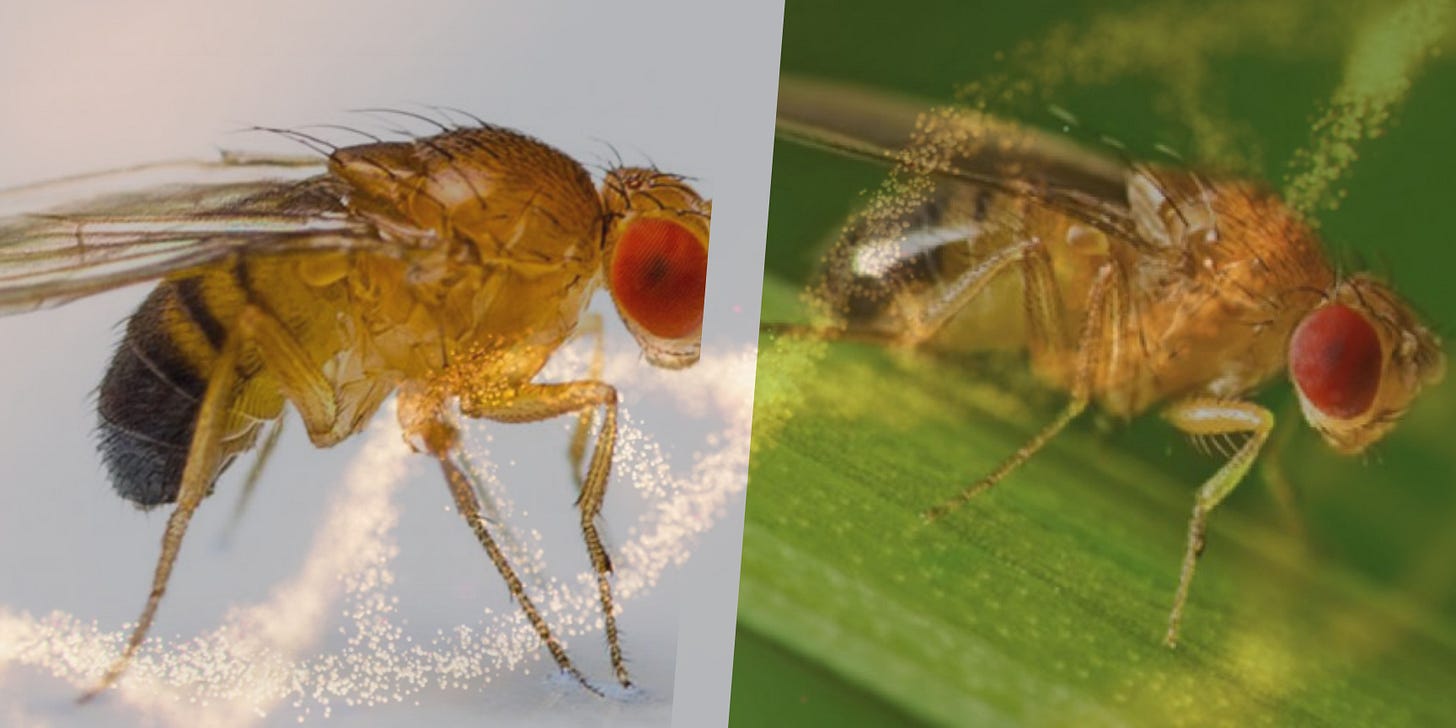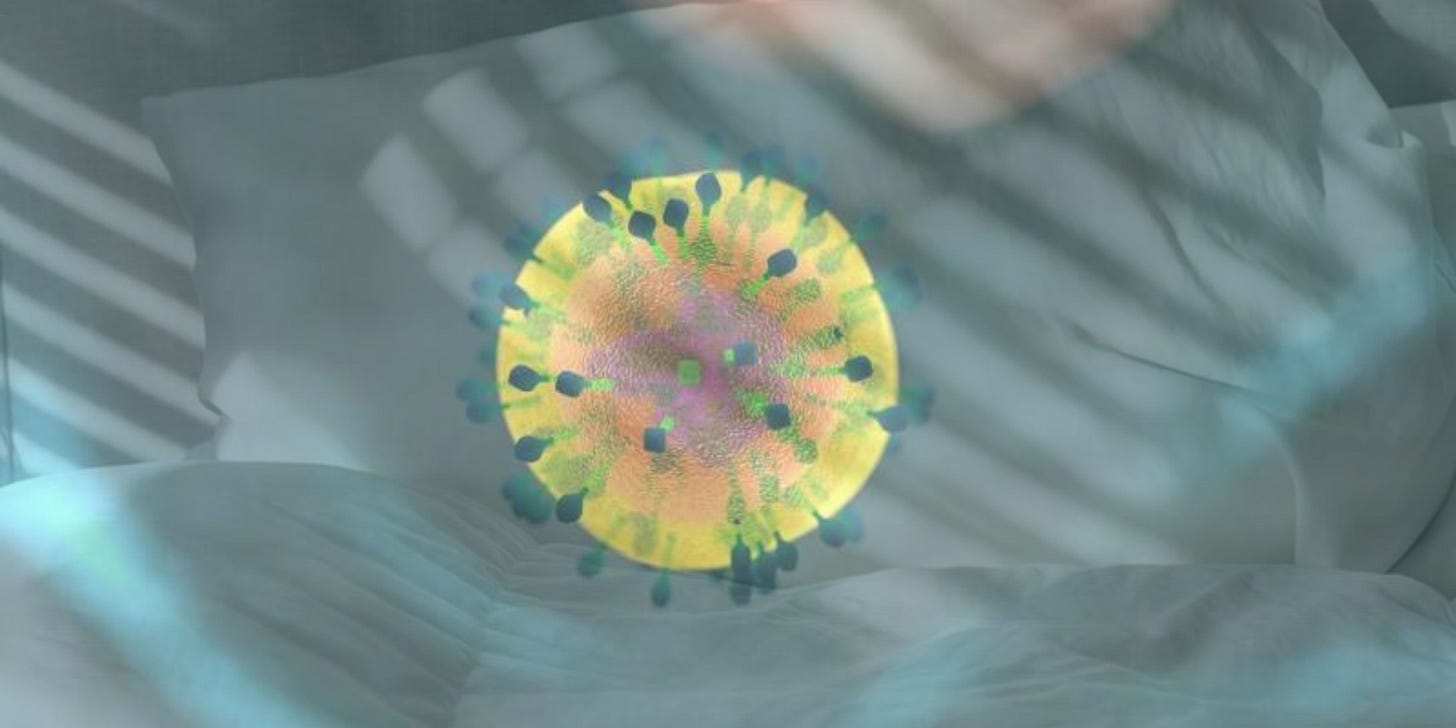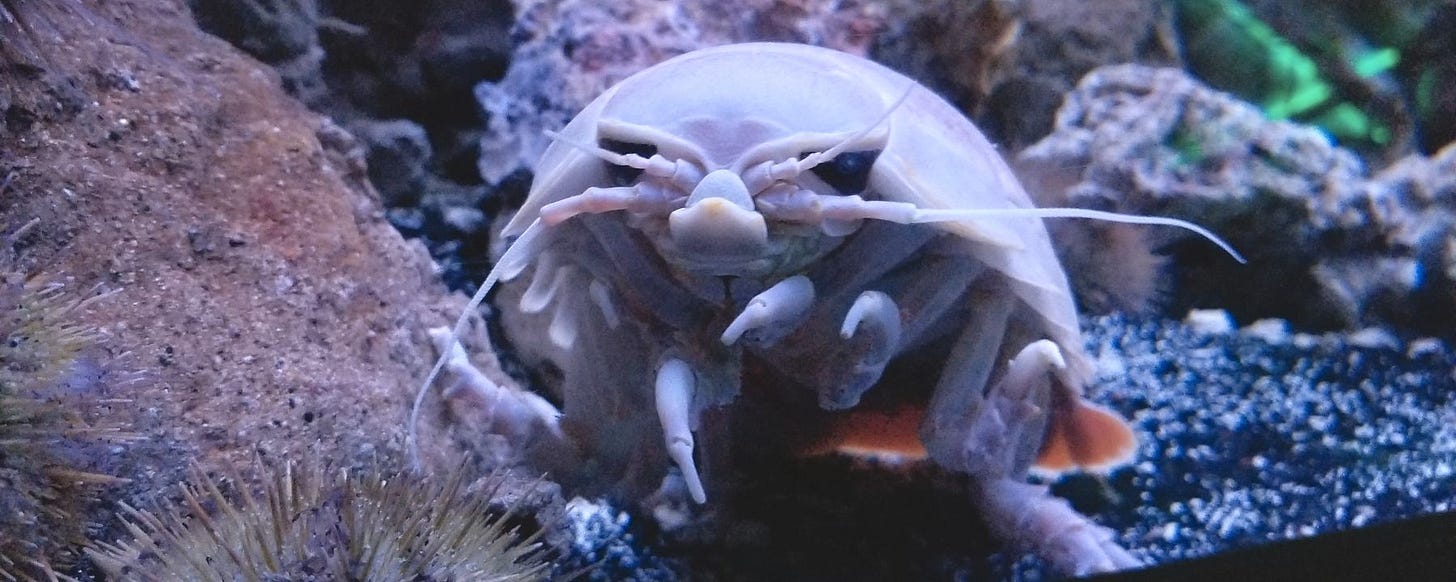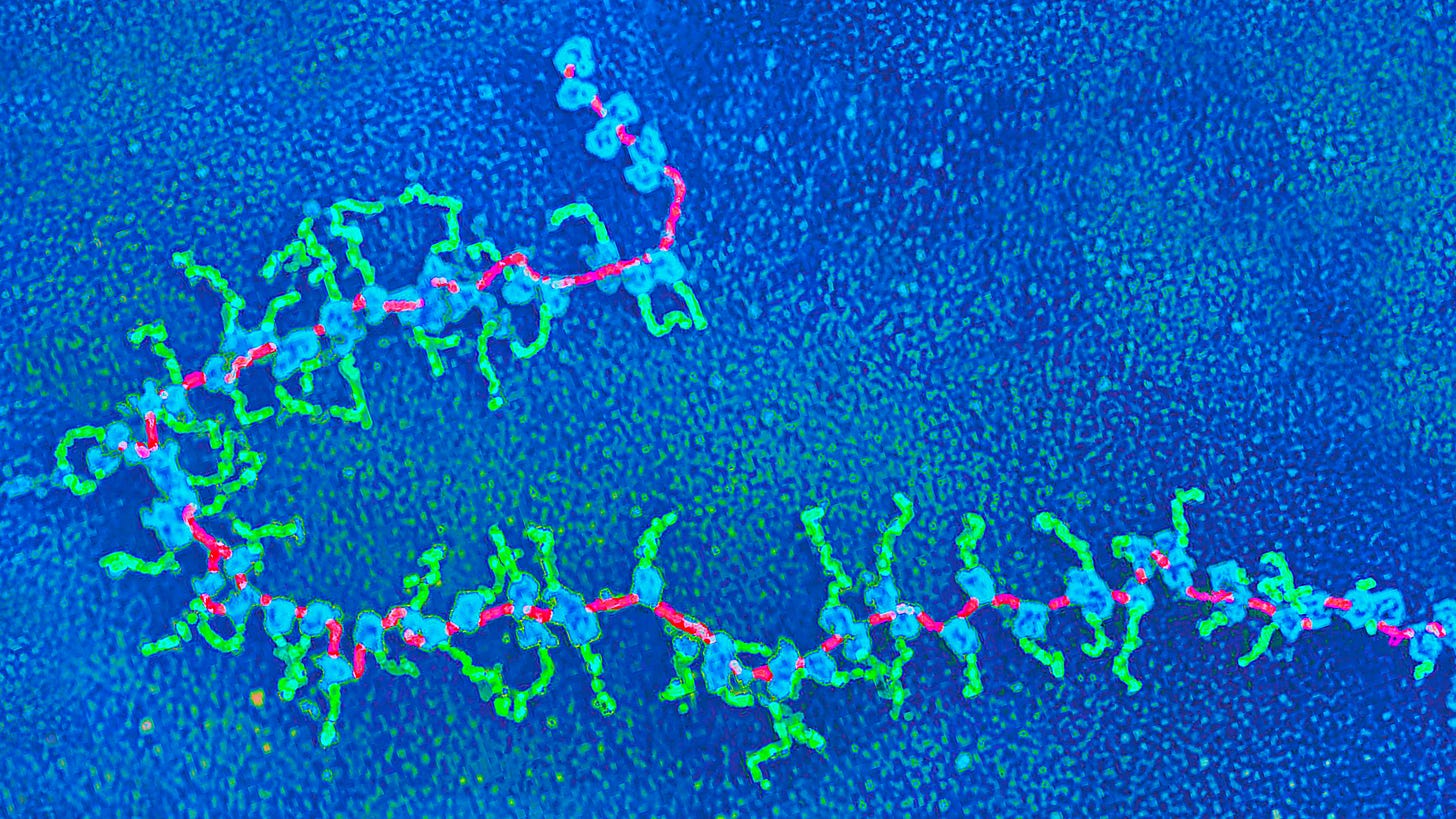#28 Artificial Chemicals, A Genomic Arm Race and T Cells in need of R&R...
Researchers gain an understanding of biosynthetic mechanisms, games of one-upmanship within a single genome as well as T Cells need rest, relaxation and maintenance...
🧪Artificial Chemicals
Growing Understanding of Biosynthetic Mechanisms…
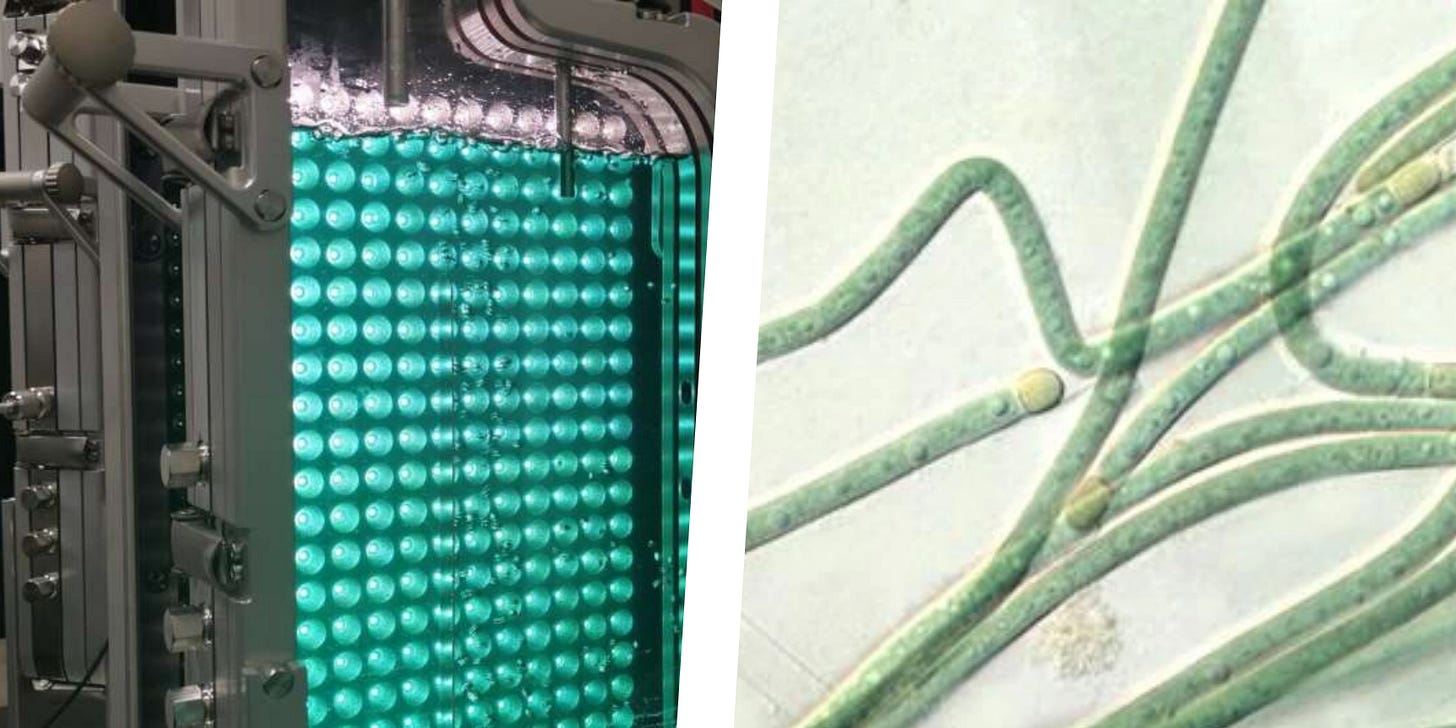
Biosynthesis is simply defined as the production of complex molecules within living organisms or cells. A research group have made significant steps forward in the understanding of the biosynthetic mechanisms in the production of cyanobacterin.
Professor Tobias Gulder and Professor Tanja Gulder have led the study into the natural product cyanobacterin, produced in small quantities by the cyanobacteria Scytonema hofmanni. Cyanobacteria are a phylum of gram negative bacteria, that rely on photosynthesis. With all new biological discoveries and breakthroughs, the growing archive of information and knowledge opens up new sustainable biotechnological applications and possibilities across a variety of fields.
Humans rely on nature for a number of chemicals and natural products that are essential to life as we know it. Whether its antibiotics such as penicillin or the anticancer drug ‘Taxol’ from the Pacific yew tree or a number of naturally occurring chemicals such as pyrethrins, used as a way to combat pest infestations, there are a number of different natural chemicals key to life today. The team researched the biosynthesis of cyanobacterin, a chemical compound highly toxic to photosynthetic organisms. Through biochemical analysis the researchers were able to elucidate the biosynthesis of the natural product for the first time. In doing so they also discovered a novel enzymatic transformation for the formation of carbon to carbon bonds.
The main focus was on the central part of the cyanobacterin carbon skeleton and how it is produced. Putative genes (DNA believed to be a gene) were first cloned by the method of Direct Pathway Cloning (DiPaC), a method by which long amplification PCR and HiFi DNA assembly is used. These genes were then activated in the model organism E. coli. This model organism is used to due its relatively “easy to manipulate” genome. "DiPaC allows us to transfer entire natural products biosynthetic pathways into recombinant host systems very quickly and efficiently," Gulder explained.
The next step saw the research team analyse the key steps of cyanobacterin biosynthesis by additionally producing all the key enzymes in the host; E. coli. In isolating them the team is able to investigate the function of each individual enzyme, and in doing so discovered the previously unknown class of enzymes called furanolide synthases. These enzymes are capable of the forming carbon-carbon bonds through an unusual mechanism.
In further studies this class proved to be efficient in vitro biocatalysts, making them attractive for biotechnological applications. Future research will cover the search for these novel biocatalysts as well as new bioactive members of this natural products class.
💪Genomic Arm Race
Games of one up-manship unfolding within the genome…
An evolutionary arms race is an ongoing competition between sets of co-evolving genes, phenotypic traits, or species that develop escalating adaptations to compete against others…
A University of Pennsylvania study has brought a particular arms race to light. A two sided genomic arms race involves stretches of repetitive DNA called satellites and similarly rapidly evolving proteins that bind to the these stretches of DNA. These satellites can contribute to essential biological functions such as the formation of molecular machines key in chromosome maintenance.
To further test this arms race, the research team intentionally played with the underscoring evolutionary balance and in doing so caused infertility, a side effect of improper satellite regulation. Through introducing one species’ satellite DNA against another’s satellite-binding protein the research team were able to better study the effects. "We typically think of our genome as a cohesive community of elements that make or regulate proteins to build a fertile and viable individual," says Mia Levine, an assistant professor of biology. She went on to say that these elements may actually harm us.
The team suggested that satellite DNA occasionally escaping the management of binding proteins can have an array of side effects such as those affecting the molecular pathways essential for fertility and cancer development. The findings indicate that the antagonistic evolutionary relationship between these two elements impact these molecular pathways.
Drosophila melanogaster is another model organism like E. coli. Satellite DNA repeats that are part of the DNA sequence in-between genes make up roughly half of the DNA in the model fly species. Due to such rapid evolution, it has long been believed that these satellite repeats were unlikely to carry out useful functions. However, recent work demonstrates a variety of roles related to maintaining genome integrity and nucleus structure.
"So this presents a paradox," Levine says. "If these regions of the genome that are highly repetitive actually do important jobs, or, if not managed properly, can be harmful, it suggests that we need keep them in check." Following a theory suggesting in 2001, that coevolution was occurring, support has been given. However, until researchers could experimentally manipulate both the satellite-binding protein and the satellite DNA, it would be impossible to prove that the disruption they observed arose due to an interaction between the elements.
Levine and brand found another similar species, D. simulans that lacked a nucleotide sequence that is found in our model organism, D. melanogaster. This satellite sequence was known to occupy the same cellular location as the protein MH and so MH could act as an indicator of the satellites presence. Levine went on to say that due to the fly being able to live and reproduce without this sequence, it gave them the unique opportunity to manipulate both sides of the arm race.
Through further research utilising the CRISPR/Cas9 technology the researchers edited the genome, removing the original MG gene from D. melanogaster and adding back the D. simulans version of the gene. Female flies with the D. simulans MH gene had reduced fertility compared to the control. Interestingly flies that lacked MH, were unable to produce any offspring at all.
The team concluded that despite rapidly evolving satellite-binding proteins, their function was still essential. Through completing the gene swap between the two species they realised that they were able to rescue the ability to make embryos in the otherwise infertile organisms.
In future work Brand and Levine hope to see segments of the genome beyond satellites and how they are involved in other organisms, to further drill down into the molecular players of these evolutionary arms race.
💤Cells need R&R
T Cells found to require rest and maintenance…
T lymphocytes or T cells are a type of white blood cell that is essential to the immune system. Along with B cells, they are one of two primary types of lymphocytes that respond to foreign substances within the body. From viruses to tumours these cells are integral, however according to a new study without proper rest and maintenance they can die, leaving their hosts more susceptible to pathogens.
It is widely known that that T cells remain in a quiescent state until pathogens or foreign material is detected. However, the molecular mechanisms behind this T cell inactivity was previously unknown.
In the new study conducted by a Yale research team, a key protein was uncovered. CD8a, found in a subset of T cells called CD8 cells is integral to maintaining the dormant state that T cells spend much of their lives in. To test the proteins involvement in the molecular mechanics of this process, the research team deleted this protein in mice. Resultantly the CD8 cells were unable to enter a quiescent state and died, leaving the host organism vulnerable to infections.
Furthermore, another protein called PILRa, that provides biochemical signals to the CD8a protein, was identified. Through disrupting the pair, both memory CD8 cells and naïve cells died. Researchers hope to understand why this resting state is crucial to maintenance and survival of T cells.
The author of the study noted how the lose of all T cells occurred as the host aged. Therefore it is possible that the inability of T cells to remain in a quiescent state could lead to higher susceptibility to infections and cancer.
Weekly Topics
🏞️ Environmental
Modelling the behaviour and dynamics of micro swimmers
Climate change could spark the next pandemic…
The secret world beneath our feet - soil
🦭Marine
Dolphins have accents that vary by region
What guppy guts can teach us about evolution…
🐼 Conservation
Mauritius pink pigeon faces extinction from inbreeding…
Sea turtle conservation gets boost from DNA detection method
Intensive whaling did not rob the fin whale of its genomic diversity
🦠 Disease and Illness
Key Facts and Biology - Monkeypox
Genetic causes of three mitochondrial diseases - New approach…
Why a specific type of neuron dies in Parkinson’s disease…
😷 COVID
SARS-CoV-2 genome analysis could boost disease surveillance…
Heart drug used on long COVID patients…
Can wastewater testing predict COVID-19 outbreaks?
🧪 Biochemistry
Subcellular map of entire brain networks
What role does biochemistry play in marine biology?
Scientists shed light on a protein linked to diabetes and hypertension
🔬 Evolution
Eukaryotes emerged in a no-oxygen environment in the ocean
Have dinosaurs evolved from warm-blooded ancestor?
Wild animals are changing faster than we thought…
🧬 Genetics
Gene linked to severe learning disabilities
Type 2 diabetes and genetics - what is the link?
Understanding transposons provides a new starting point for gene editing tools…
📷 Weekly Camera Roll
Click on the text below to keep reading…
Reference List
Content may be adapted and edited for style and length.
🧪Artificial Chemicals
D’Agostino, P., Seel, C., Ji, X., Gulder, T. and Gulder, T., 2022. Biosynthesis of cyanobacterin, a paradigm for furanolide core structure assembly. Nature Chemical Biology, 18(6), pp.652-658.
💪Genomic Arm Race
Brand, C. and Levine, M., 2022. Cross-species incompatibility between a DNA satellite and the Drosophila Spartan homolog poisons germline genome integrity. Current Biology,.
💤Cells need R&R
Zheng, L., Han, X., Yao, S., Zhu, Y., Klement, J., Wu, S., Ji, L., Zhu, G., Cheng, X., Tobiasova, Z., Yu, W., Huang, B., Vesely, M., Wang, J., Zhang, J., Quinlan, E. and Chen, L., 2022. The CD8α–PILRα interaction maintains CD8 <sup>+</sup> T cell quiescence. Science, 376(6596), pp.996-1001.

